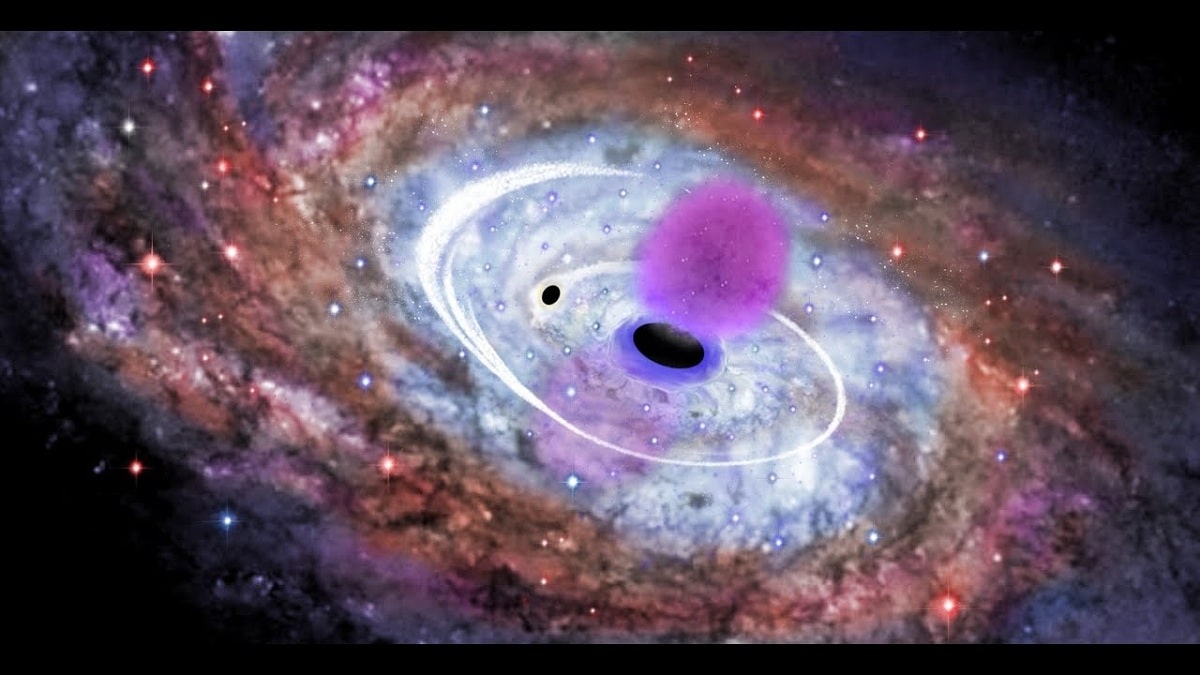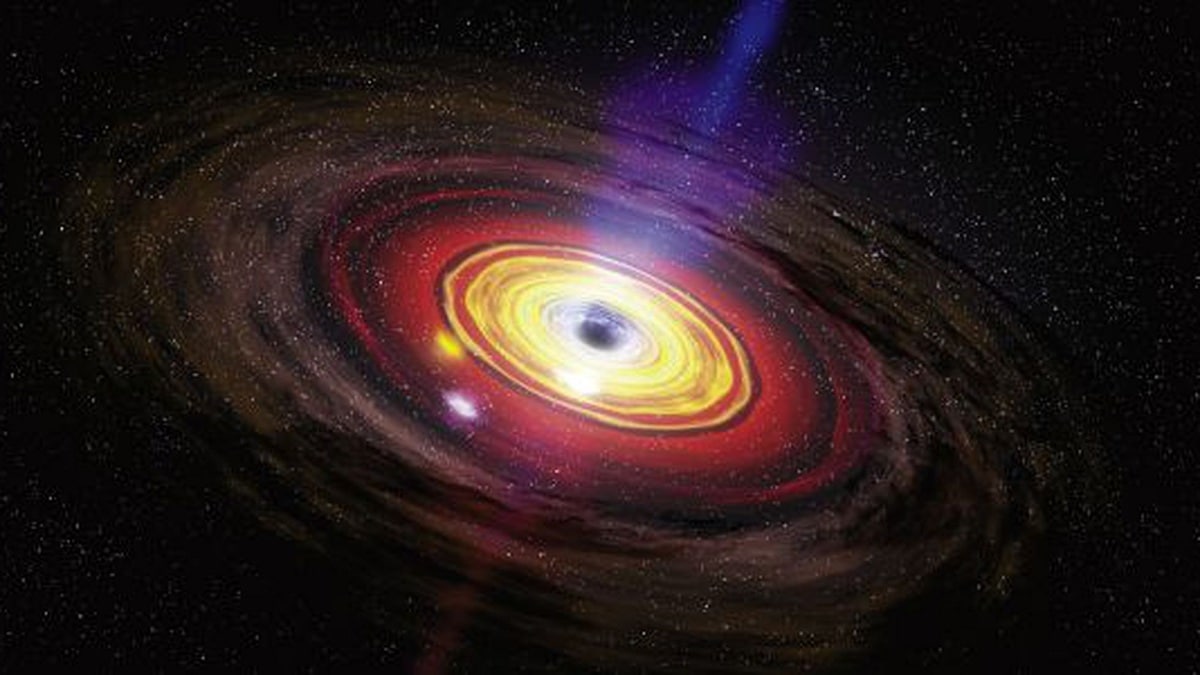
We know that the Milky Way is our galaxy and that it is a collection of billions of stars orbiting around something. Scientists have long wondered what is in the center of the milky way. It is essential to know it in order to know more about our universe and the life expectancy of the solar system.
For this reason, we are going to dedicate this article to telling you what is in the center of the Milky Way and what its characteristics are.
What is in the center of the Milky Way

It was not until the 1918th century that the location of the center of our galaxy was first estimated. In XNUMX, Harlow Shapley gave her possible location while studying the distribution of a globular cluster, which is located at the equatorial coordinates AR 17 h 45 m 40,04 s, Dec -29° 00′ 28,1″ (Julian Era J2000) or any in itself approximately 50.000 is approximately 15.000 parsecs from the Earth and the Sun. This was subsequently revised, especially at the XIX Congress of the International Astronomical Union, which determined that the center of the Milky Way is 8.500 parsecs from the Sun, although this distance may be the one indicated by studies later (because the technology also allows more precise observations), about 7.900 parsecs (+-300). There is also a UTC time session established among other things.
We sometimes comment here that interstellar dust is one of the things that makes space observations difficult. This has left many people confused about the "mysterious" Tabby star, but with the advent of high-frequency gamma-ray, infrared and X-ray observatories and more, it is possible to understand better despite the dust.
In 2002, it was these X-rays that revealed (or rather detected) what was at the center of the Milky Way, thanks to data sent back by a young Chandra that seemed to confirm what had long been suspected of being a supermassive black hole. . In fact, the key to these rays, in addition to being able to penetrate this gaseous cloud, is the last trace of matter before it is swallowed by the black hole.
This massive black hole was later adopted by more research and observatories, such as the European Southern Observatory (ESO, Chile), which allowed a team of German astronomers to track the movement of 28 stars orbiting the center of the Milky Way… especially in about black holes four million times heavier than the sun, which adds more importance to the hypothesis that galaxies formed around it. But as we said at the beginning, just this week something changed. It turns out that there is not just one, but up to a dozen black holes at the center of the Milky Way, according to Reuters, according to astrophysicist Chuck Haley and his team on his work.
Chandra has also detected a cluster of smaller binary black holes orbiting Sagittarius A* in the center of our galaxy, estimating that there are up to 10.000 black holes in total around Sagittarius A*. Sagittarius A* is a very important source, the very compact and bright radius of the center of our galaxy, or the same, the supermassive black hole, which receives its name within the Sagittarius A (wider) structure.
What is the center of the Milky Way like?

As we have seen when talking about current space observatories, the mechanics of this telescope can capture different wave spectra. In this case, thanks to infrared images, astronomers were able to study the movement of the star in that place, which helps to understand how the cluster was formed, as well as its mass and structure. In 2018, Chandra and ESO enabled a 360-degree virtual tour of the center of the Milky Way. A visualization allowed the researchers to understand the presence of X-rays previously observed in a disk about 0,6 light-years outside of Sagittarius A*, concluding that although it ended about a hundred years ago, it still continues to affect surrounding areas.
A team of astronomers "painted" this potentially desolate place a few weeks ago. Chris Packham, professor of physics and astronomy at the University of Texas, and Pat Roche, professor of astrophysics at the University of Oxford, directed the high-resolution map of magnetic field lines drawn from Sagittarius A*.
For that, used information from the infrared cameras of the Gran Telescopio de Canarias (in La Palma, Spain), since, as we mentioned before, this radiation is capable of passing through the dust cloud between Earth and the galactic nucleus. In this case, they also benefit from the camera equipment, which is capable of filtering polarized light in relation to magnetic fields, being able to trace their lines with a level of detail that has not been achieved until now.
Results of studies on what is in the center of the Milky Way

The result: a kind of Van Gogh starry night, but showing us some stars that emit a lot of infrared radiation, entangled between these field lines, and the location of that supermassive black hole.
This is the sharpest infrared image ever obtained of the galactic center, and the first time that magnetic field lines they have been seen in detail at a distance of 25.000 light years. Since these things often happen, this is a window to learn more about the field and the nature of space phenomena.
The information they extracted when creating this map revolves around how the dust behaves with respect to magnetic fields and strong stellar winds, and that another (smaller) magnetic field that exists near the core would come into play. It plays an important role in the flow of gas and dust that surrounds super black holes.
The beauty of all this, beyond the photos or maps that can be created, is that, while answering the question, the human fights the pothole again to get out of it. When the visible spectrum is not enough to gossip about certain regions, other glasses are devised to discover what surrounds us and gradually point out the origin of everything.
I hope that with this information you can learn more about what is in the center of the Milky Way.
The topics you send are always EXCELLENT…I will continue reading them forever…Cordial greetings.